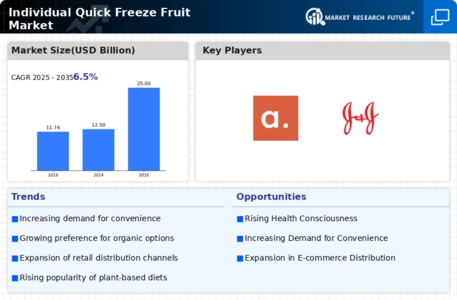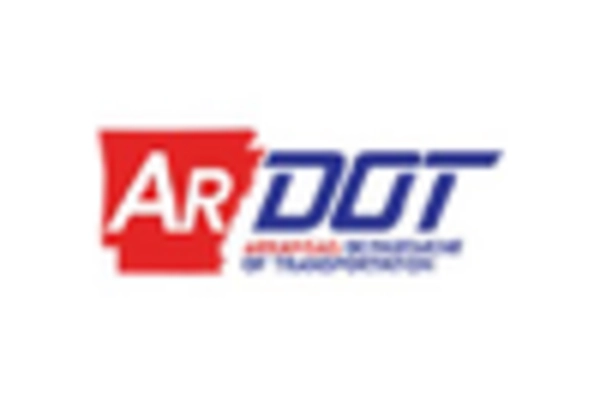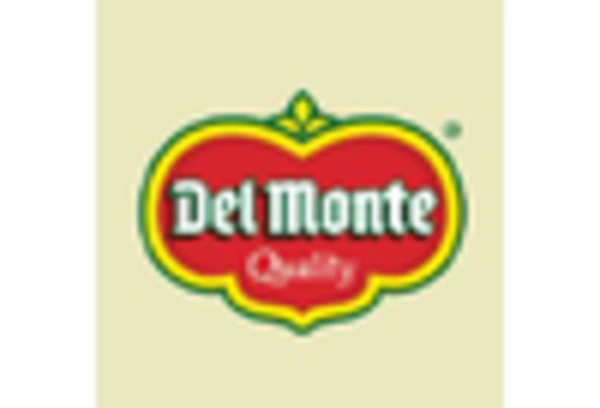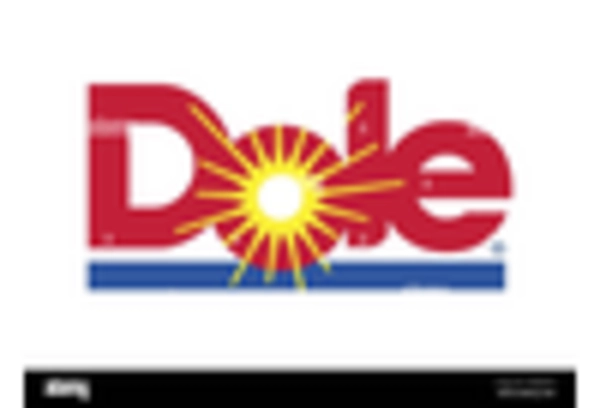Expansion of Retail Channels
The Individual Quick Freeze Fruit Market is witnessing an expansion of retail channels, which is likely to enhance product accessibility. Supermarkets, online grocery platforms, and specialty health food stores are increasingly stocking frozen fruits, catering to diverse consumer preferences. This expansion is supported by market data showing that online grocery sales have surged, with frozen food categories experiencing significant growth. As more consumers turn to online shopping for convenience, the Individual Quick Freeze Fruit Market stands to benefit from increased visibility and availability, potentially driving sales and market penetration.
Health Conscious Consumer Behavior
The Individual Quick Freeze Fruit Market is benefiting from a shift towards health-conscious consumer behavior. With an increasing awareness of the importance of nutrition, more individuals are incorporating fruits into their diets. Frozen fruits, particularly those processed through individual quick freezing, retain their nutritional value, making them an attractive option for health-focused consumers. Market Research Future indicates that the demand for frozen fruits is expected to rise, driven by the growing popularity of plant-based diets and the emphasis on natural ingredients. This trend highlights the potential for the Individual Quick Freeze Fruit Market to expand its reach among health-oriented consumers.
Innovations in Packaging Solutions
The Individual Quick Freeze Fruit Market is experiencing innovations in packaging solutions that enhance product appeal and shelf life. Advances in packaging technology, such as vacuum sealing and resealable bags, are improving the preservation of frozen fruits. These innovations not only maintain the quality of the fruits but also cater to consumer preferences for sustainable and eco-friendly packaging. Market trends suggest that consumers are increasingly drawn to products that offer convenience and sustainability. Therefore, the Individual Quick Freeze Fruit Market may leverage these packaging advancements to attract environmentally conscious consumers and differentiate itself in a competitive landscape.
Rising Demand for Convenience Foods
The Individual Quick Freeze Fruit Market is experiencing a notable surge in demand for convenience foods. As consumers increasingly seek quick and easy meal solutions, frozen fruits have become a staple in households. The convenience of having ready-to-use fruits for smoothies, desserts, and cooking appeals to busy lifestyles. Market data indicates that the frozen fruit segment is projected to grow at a compound annual growth rate of approximately 5.5% over the next few years. This trend suggests that the Individual Quick Freeze Fruit Market is well-positioned to capitalize on the growing preference for convenience, as consumers prioritize time-saving options in their food choices.
Growing Popularity of Smoothie Culture
The Individual Quick Freeze Fruit Market is benefiting from the growing popularity of smoothie culture, which has become a significant trend in recent years. Smoothies are often perceived as a healthy and convenient meal option, leading to increased demand for frozen fruits that can be easily blended. Market data indicates that the smoothie market is projected to grow substantially, with frozen fruits playing a crucial role in this expansion. As consumers seek nutritious and quick meal solutions, the Individual Quick Freeze Fruit Market is likely to see a corresponding rise in demand, positioning it favorably within the broader food and beverage landscape.

















Leave a Comment